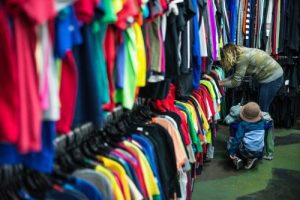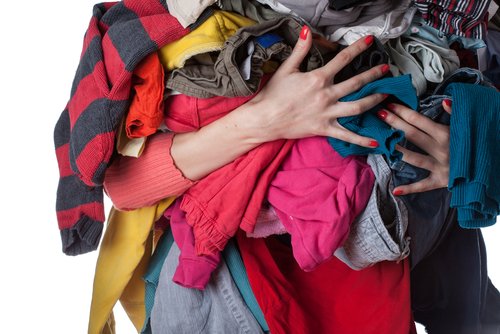Statistics indicate that one of the least likely recycled materials among consumers is textiles. According to CBC, consumers channel much of their attention and efforts where recycling is concerned with materials such as newspapers, plastic containers, glass, plastic, and cardboard. In Ontario alone, as of 2016, only 15 percent of discarded textiles were being recycled. The remaining 85 percent is consistently being re-directed to a landfill site.
Experts suggest that the practice of transforming textiles into credential clothing is slowly leading to a transformation into how we use and reuse our materials. “Credential clothing,” otherwise known as “original clothing,” include a variety of materials such that are initially collected in the drop and donation boxes. These boxes are typically and strategically placed in high traffic areas, and even affluent communities. The intent among collectors and distributors is to collect many materials, and high-grade items at that. Unlike other used materials, experts maintain that what makes an item “credential” is its status as unsorted, untouched, not graded in terms of their quality, and free of contamination that may come by way of mixing with trash and wet items. And perhaps most importantly, credential clothing must be found in the exact condition it was first recovered in order to be processed and recycled as top-grade credential material.
 These qualities are the very reason that collectors prefer credential clothing to other types of recycled textiles. Collectors approve of the fact that credential materials are – as a rule – higher grade/quality and protected while deposited in donation boxes by being preserved in bags and left unopened. Experts in credential clothing find that distributors often lose interest in materials that have been removed from their bags. The reason for this is both practical and financial in that these sorts of materials typically receive a higher price at the market if they are of credential quality, and collectors value the ability to select items on their own and determine value.
These qualities are the very reason that collectors prefer credential clothing to other types of recycled textiles. Collectors approve of the fact that credential materials are – as a rule – higher grade/quality and protected while deposited in donation boxes by being preserved in bags and left unopened. Experts in credential clothing find that distributors often lose interest in materials that have been removed from their bags. The reason for this is both practical and financial in that these sorts of materials typically receive a higher price at the market if they are of credential quality, and collectors value the ability to select items on their own and determine value.
At Bank & Vogue, we collect, source, process and send out and sell high-grade credential clothing annually for both domestic and international export or redistribution. These materials come to us by way of charities and for-profit collectors across North America and additional global markets, and the process typically entails having our sellers pick up materials via home pick-up routes, and/or collecting textiles from public bins located in neighborhood drop off locations, in-store drop-offs and donation stations. Materials are then usually sorted and distributed as loose credential clothing in the range of minimum weight of 25,000 to a maximum of 30,000 pounds. Baled credential clothing, however, can weigh as little as 40,000 pounds.
For those interested in learning more about credential clothing and how our staff at Bank & Vogue can help you find textiles that provide you with great cost benefit value and the ethical choice to recycle rather than waste, be sure to contact us via email or phone. Our team is committed to helping our clientele find viable ways to use textiles in a responsible and cost-effective way, as well as discuss pricing and logistics.







